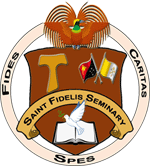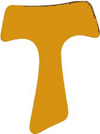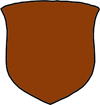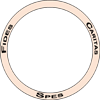

The logo prominently features two flags, symbolizing
the concepts of soul and body.
The first flag, representing the Vatican, signifies
the essential moral teachings critical for any nation's flourishing. It
embodies the soul of the country. Just as a body is animated by its
soul—rendering it lifeless without it—a nation bereft of moral teachings cannot
endure. As stated in Psalm 127, “If the Lord does not build a house, in vain do
its builders labor.” In this context, no aid or developmental efforts can
sustain a nation without incorporating Christian moral principles articulated
by Christ in the scriptures and interpreted over time by the Holy See, the
Church’s teaching authority.
The second flag, that
of Papua New Guinea, represents the physical nation where Christianity has
taken root. The state or government is comparable to the body, sustained by the
Christian moral teachings that act as its soul. It is essential to recognize
that the Church and State coexist not in opposition but as entities that are
mutually interdependent and necessary for the welfare of society, as outlined
in Romans 13.

The presence of the book symbolizes the wisdom attainable by individuals, who are created in the image and likeness of God. This wisdom is vital for making sound decisions. Individuals may often believe they comprehend what brings about their happiness; however, in reality, misguided choices can lead to adverse outcomes. The book may represent a Bible or authoritative philosophical or theological teachings, accessible to all individuals created in God’s image. As rational created beings, we embody the logos (λόγος) of the true Logos, the uncreated Being. Logos (λόγος) in Greek means word, thought, or reason.

The dove serves as a symbol of the Holy Spirit, representing the motivating force within human beings. The Spirit inspires individuals to engage in good works. The absence of the Holy Spirit can hinder virtuous action. Conversely, negative influences may lead individuals toward destruction, while the Holy Spirit promotes actions that build the kingdom of God. The dove and olive branch are a universal symbol of peace and forgiveness

The Tau cross bears two significant meanings within the St. Fidelis Logo. First, it represents the cross our father Francis gave to his followers to walk the Gospel way of life. Second, it is referenced in Ezekiel 9:4 and Revelation 7:3 as a symbol of salvation, serving as the sign made at the beginning and conclusion of Christian prayers.

The shield itself signifies defense rather than offense. The symbols denoted on the shield—the dove, the book, the two flags, and the Tau cross—collectively function to protect against adversarial attacks.

Surrounding the shield in a circle are the theological virtues of Faith (fides), Hope (spes), and Charity or Love (caritas). As articulated in 1 Corinthians 13:13, “So faith, hope, love remain, these three; but the greatest of these is love.” The concept of "faith, hope, and love" being circular means that these three concepts are interconnected and mutually reinforcing, where having faith can lead to hope, which in turn can inspire love, and then that love can further strengthen your faith and hope, creating a continuous cycle;

Finally, the Bird of Paradise depicted in the logo serves as the national symbol of Papua New Guinea, representing the joy and freedom inherent to the nation. These ideals of joy and freedom are fundamental to the human experience, and they are encapsulated in the symbols presented within the logo.
